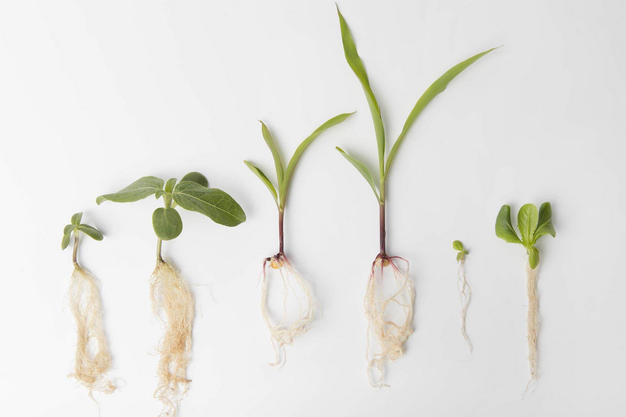The Pseudomonas family is very versatile, impacting not just plants, but also humans, animals, insects, fungi, and other bacteria. Not all of these interactions are beneficial. In agriculture, they can play a role in plant growth promotion, and controlling plant diseases, but they can also be pathogenic to plants and insects.
Plant growth promotion
Several Pseudomonas species, such as P. putida and P. fluorescence, are considered plant growth-promoting rhizobacteria (PGPR). The term was already introduced in 1978 and is defined as the rhizosphere bacteria that can enhance plant growth and yield either directly or indirectly by colonizing the plant roots.

Plant growth promotion rhizobacteria play a role in enhancing plant growth and resilience. The mechanisms involved in this can be very broad, nutrient solubilization and uptake, phytohormone production, biocontrol, induced resistance or stress tolerance.
Nutrients
Pseudomonas species can make several essential nutrients, like phosphorus, iron and potassium available to plants. The bacteria have different modes of action for different nutrients. Iron can be taken up directly by some Pseudomonas species, others will produce siderophores. These siderophores are high affinity iron chelating compounds, which will bind to iron in the soil and transport the iron back to the bacterial cell where it can be utilized by both the bacteria and the plant. Phosphorus and potassium can be made available when the Pseudomonas secretes organic acids such as citric acid. The acid helps lower the soil pH, which helps dissolve the insoluble phosphate and potassium compounds converting them into forms that the plants can absorb.
Phytohormones
Pseudomonas species can produce a variety of phytohormones (auxins, cytokinins, gibberellins, abscisic acid, ethylene). These compounds play an important role in processes like root elongation, cell division, shoot formation, seed germination, flowering, and stem elongation. Many of these processes are then linked to the stress tolerance of the plant. For example, auxins help in root development, which is essential for water and nutrient uptake, especially under drought conditions, or abscisic acid (ABA) which induces stomatal closure to reduce water loss through transpiration which is important in drought and salinity.
Biocontrol
Pseudomonas species can produce antibiotics, siderophores, and enzymes to control pathogens, but competition for nutrients and space is also a mode of action they use. Siderophore production is linked to competition for nutrients, the siderophores are molecules that bind and sequester iron from the environment, limiting its availability to pathogenic microbes, thereby inhibiting their growth. The enzymes produced can degrade the cell walls of fungal pathogens.
Often used as plant growth-promoting rhizobacteria are P. fluorescens, P. putida, P. protegens and P. chlororaphis. These all have their own set of mechanisms with which they support the plant.
Is Pseudomonas harmful
One of the diseases Pseudomonas species can cause in plants is soft rot in vegetables. Bacteria are able to enter the plant through its natural openings such as stomata or wounds. These entry points can be caused by insects, mechanical damage or environmental factors. Once inside, the bacteria multiply rapidly, spreading through the plant. They produce enzymes that break down cell walls which leads to the release of plant cell contents which the bacteria use as nutrients. Infected plant tissues become soft and watery.
Soft rot in various crops like tomatoes, cucumbers, and carrots, can be caused by, for instance, Pseudomonas viridiflava and Pseudomonas marginalis.
Not just a pathogen
Pseudomonas syringae is a bit of a strange one, some strains of this species have beneficial characteristics, and some are pathogenic. There are reports of strains that produce phytohormones and other growth-promoting substances, certain strains can act as biocontrol agents against pathogens and some assist plants to survive under adverse conditions.
But there are also Pseudomonas syringae strains that can produce a variety of virulence factors that help the bacterium to suppress the plant's immune response and establish infections. Pathogenic strains can infect a variety of plants, ranging from fruit and ornamental trees to vegetables like tomatoes and peppers.
(The above-mentioned microbial genera all consist of a wide variety of species and strains. The precise beneficial effects of these microbes depend on the specific species and strain that is used)
Source: Incotec
